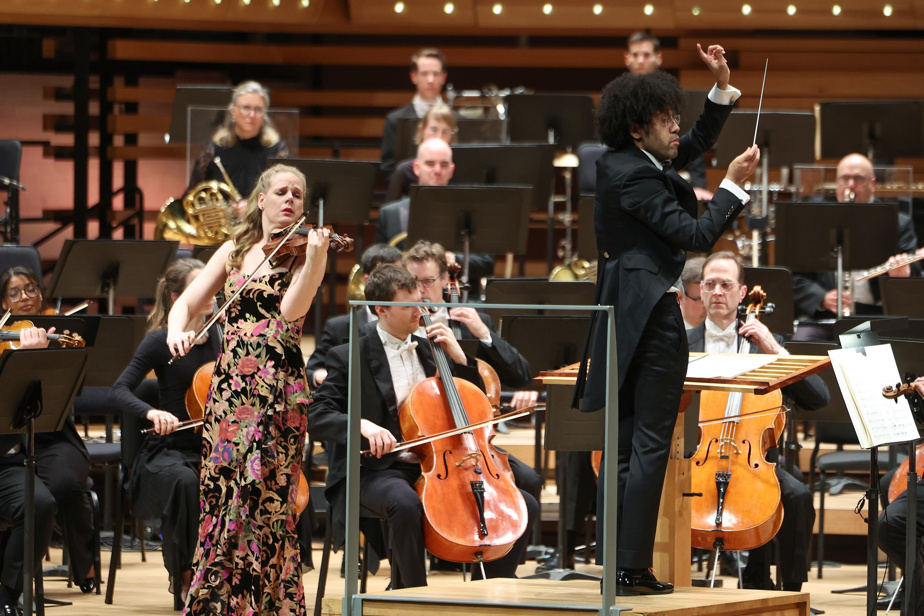It was a festive evening Tuesday at the Montreal Symphony Orchestra (OSM), which marked the start of its 90e year of existence at the same time as its first winter program, featuring two works as rare as they are fascinating.
After being welcomed by a mini-exhibition on the history of the formation in the foyer of the Maison symphonique, spectators were able to hear the enthusiastic speech of the CEO Madeleine Careau, who, in the presence of descendants of two of the founders (Antonia Nantel and Athanase David), revealed that 90 people would find a gift under their chairs (season tickets, recordings, etc.), creating a joyful commotion in the room!
The program was not necessarily the most festive, with the Violin Concertoo 1, op. 35, by Szymanowski, and the Symphony no 7 in E minor by Mahler, one of the new conductor’s favorite composers. Not festive, but eminently exciting, especially since the two works are not popular, in particular the symphony, which suffers from a certain disenchantment due to its modernism, paling to be placed between the poignant Sixth and the monumental Eighth.
The two scores, composed around ten years apart in a modernizing post-romantic idiom, have the same nocturnal inspiration in common. If Mahler’s symphony is nicknamed “Song of the Night” (it has two Nightmusikor “night music”), the concerto is inspired by a poem entitled “May Night”.

PHOTO MARTIN CHAMBERLAND, THE PRESS
The violinist Simone Lamsma
For Szymanowski, the OSM called on the Dutch Simone Lamsma, who had offered a memorable Concertoo 1 by Bartók in such company two years ago. The musician definitely feels the music of the 20th centurye century. She does not listen to herself play, but tells something to the audience, which does not prevent the high notes (the score is very generous in this matter) of her stradivarius from ringing with beauty at every moment, courtesy of a vibrato we couldn’t be more balanced.
In the orchestra, we sometimes find Rafael Payare from Rite of Spring (last September) in the rapid, well-characterized passages, sometimes that ofA hero’s life (last spring) in the more romantic episodes (Szymanowski obviously knew his Richard Strauss).
And the Seventh of Mahler? We regret that the OSM did not place its microphones as for A hero’s life, the recording of which will be released in two months! Because Payare offers us, as with its Turangalîla-Symphony from last December, an extremely well put together product, with an orchestra in very good shape, particularly on the brass side (what horns in the second movement, not to mention the saxhorn solo at the start of the first movement!).
There Seventh Although it may not be Mahler’s most interesting symphony (we won’t lie), the conductor underlines all its contours with a care for detail which is far from excluding eloquence.
Only reservation: the lack of flexibility, of madness in both Nightmusik (second and fourth movements), particularly in the deliberately grotesque passages inserted by Mahler. Payare could have more fun here. Same in the section marked grazioso of the finale. But these are only small details concerning a high-flying interpretation.
This Wednesday at 7:30 p.m. and Saturday at 2:30 p.m., at the Maison symphonique
